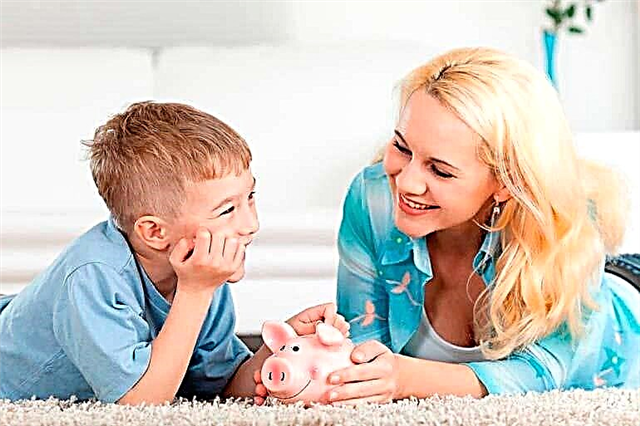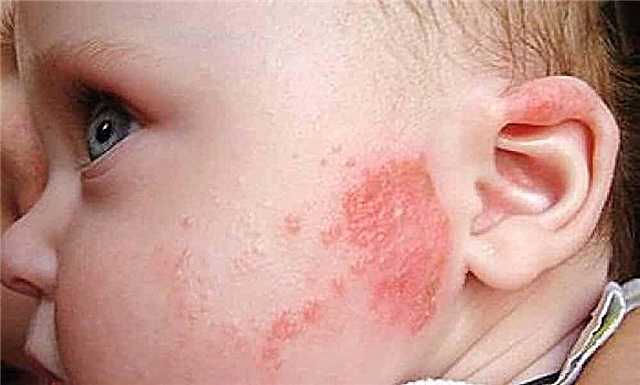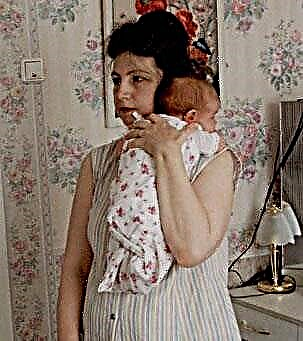
The delicate thin skin of a newborn baby is a subject of special admiration for parents. Therefore, it is not surprising that moms and dads begin to sound the alarm if pimples appear on the child's face from the first days of life. Why this is happening and what to do with this problem, we will tell in this material.

What it is?
Acne in a newborn on the face can be isolated, and can occupy a fairly large area. Most often we are talking about white or yellowish fatty glands, but there are also red hollow acne. In medicine, this is called neonatal cephalic pustulosis. According to various sources, the problem occurs in many babies, pimples appear in 20-35% of newborns.

Pimples usually appear on a child's nose, forehead, cheeks, and chin. Quite often, a rash appears in the scalp, as well as on the ears, behind them and on the neck. Even less often, pimples appear on the chest. The nature of the rash itself may vary. If there are only yellow or white wen on the skin, then these are closed comedones. If black dots appear, which is not too typical for an early age, then these are open comedones. Purulent blackheads are pustules, and if blackheads look like small balls, elevations above the skin without visible filling are papules.
Most often, neonatal pustulosis begins immediately after birth, as well as in the first month of independent life of the child. Less often - 3-4 months after childbirth and very rarely - by the end of the first year of life. This phenomenon cannot be considered a disease. The problem is of a physiological nature and usually goes away on its own without a trace immediately after the natural causes that caused it are eliminated. In the vast majority of babies, acne disappears a month after the first elements appear. In some children, it persists for 4-6 months.


Reasons for the appearance
The causes of acne in early childhood are not fully understood.
The most convincing arguments are usually two provoking factors:
- hormonal processes in the baby's body;
- adaptation of the child's skin to new conditions of existence.
Hormonal processes are triggered by estrogen, a female sex hormone, which the baby gets from the mother during pregnancy and during childbirth. This hormone causes increased production of subcutaneous fat by the sebaceous glands, as a result of which the pores are "clogged" by the secretions of the glands, the hair follicle and the gland itself become inflamed. The influence of maternal hormones on the baby's body does not last long - several months. Then the child's hormonal background returns to normal and remains stable until adolescence. At 12-13 years old, the same processes will begin in the body, but they will only be caused by the child's own sex hormones.

The second reason is adaptive processes. For nine months of pregnancy, the baby's skin got used to contact in the aquatic environment, because in the mother's womb, the baby was surrounded by amniotic fluid. In the first weeks after birth, the skin of the baby "rebuilds" to the air environment, "learns" to work in a new mode for themselves. The debugging process takes some time, and therefore the increased production of sebum is natural.
Subcutaneous fat is a means of protection of the body, with its help the skin is protected from aggressive external influences. There is nothing surprising in the fact that the skin of the newborn tries to protect the baby from external influences. The appearance of pimples has nothing to do with hygiene issues. Therefore, it is not worth "executing" yourself for insufficient care, as a result of which the baby became covered with acne. It doesn't depend on leaving.

When acne is a sign of disease
Acne in newborns is not a cause for concern, which cannot be said about rashes that are caused by dermatosis and some infectious diseases. Therefore, it is important for parents to teach how to distinguish ordinary pimples, the appearance of which, as we found out, is quite natural, from the skin manifestations of a painful condition.

Pimples and blisters can appear with chickenpox, with herpes infection, with various dermatoses, an allergic reaction. They can be the result of diaper dermatitis, if they are in the groin, contact dermatitis - if they coincide in location with skin areas in contact with clothes, seams on clothes. A careful and thoughtful examination of the child's body will help to distinguish neonatal acne from manifestations of the disease:
- Localization. Harmless acne is located mainly on the cheeks, nose, forehead, chin, behind the ears, and occasionally on the chest. An allergic reaction usually has a wider "geography", spreading to the body - to the stomach, back, skin folds, to the buttocks. Diaper dermatitis is limited to the diaper's coverage area. A viral infection can be localized to any part of the body, but it is never limited to just one part of the body. An exception is the herpes simplex virus of the first and second types, which usually affects the lips, nose, nasolabial triangle.


- The appearance of the rash. An allergic rash looks like a cluster of small red dots without purulent tips. A herpetic infection always looks like small blisters filled not with pus, but with serous fluid. Such blisters are common in many viral infections, but not common in neonatal acne.
- Child behavior. Physiological pimples do not cause any inconvenience to the baby. They do not itch, do not hurt, do not itch. The same cannot be said about allergic dermatitis. With allergies, the child will show anxiety as the rash will itch. Itching and tingling sensations are common in many viral infections, especially herpes.
- The general condition of the child. With acne, there are no additional symptoms of the disease. Pimples do not affect the child's mood, sleep, or appetite. In case of an allergic reaction, the temperature may be slightly increased, there may be general malaise, drowsiness, indigestion or respiratory manifestations - a runny nose, cough. Viral infections always proceed with high fever, symptoms of intoxication of the body, impaired appetite and sleep patterns.


If it is difficult to distinguish acne from a painful rash on your own, do not hesitate, you should call a doctor at home. The doctor will help you understand this difficult issue and give the necessary recommendations.
Diagnostics
Usually a visual examination of the child is enough for a specialist. By its characteristic appearance, the doctor can easily distinguish acne from other possible ailments. In doubtful cases, as well as in severe and deep acne, the doctor may recommend a general blood test and the contents of the purulent "head" for bacterial culture. This will make it possible to establish the exact type of microbe that caused the inflammation, as well as to find out what type of antibiotics it is sensitive to.
Popularly, this analysis is called the analysis of feces for dysbiosis. If the crumbs reveal abnormalities in the balance of bacteria living in the intestine, drugs such as "Bifidumbacterin" may be prescribed to him, which will help normalize the microflora.

Pediatricians quite often prescribe infants with acne a study of feces for the presence and characteristics of intestinal microflora.

Treatment
Neonatal acne in a child does not require special treatment. Almost always, they go away on their own as the crumbs' body becomes normal. But caring parents cannot calmly look at the baby's face covered with acne, they definitely need to do something to feel that they are giving the baby everything he needs. It is useless to persuade moms and dads - every pediatrician knows this. Therefore, there are certain recommendations that, although they do not affect hormonal processes, somewhat facilitate the adaptation of the child's skin to the new environment.
The quantity and quality of acne depends on the environment., therefore, it is important to create a microclimate for the child in which he will not sweat a lot, because excessive sweating creates the prerequisites not only for clogging the pores with sebaceous secretions, but also for other, less harmless skin rashes. All newborns tend to sweat, because their thermoregulation has not yet been debugged. The optimal conditions that mom and dad can create are the air temperature in the room no more than 20 degrees Celsius, as well as the relative humidity of 50-70%. To do this, it is enough to buy a room thermometer and a special device - a humidifier. This purchase is more than useful, because the correct humidity in the room is also an excellent way to prevent respiratory diseases.

Bed linen in a newborn's crib should be made from natural fabrics without the use of textile dyes. In a dream, the baby's head sweats more. Therefore, it is very important that the scalp and face are in contact only with natural tissues. Place a folded, iron-ironed diaper under the head. The diaper must be changed to a fresh one at least three times a day.
Wearing the right clothes will also help reduce sweating. The kid does not need to be wrapped up. At home, the baby may well be without a cap at all, and for a walk you should dress the baby strictly according to the weather. If the child is still sweating, for example, in winter in overalls, then you should bathe him in warm water without the use of detergents and baby soap immediately after returning from the street and change into dry clean linen.

You can bathe your child with soap only once a day. Moreover, it is better to use soapy water instead of a bar of soap, which should be prepared before bathing. Any soap, even baby soap, dries the skin.

Often, the use of detergents only provokes excess production of subcutaneous sebum, which the sebaceous glands will try to protect the skin from drying out.
If acne is accompanied by the appearance of a crust on the face, do not mechanically remove it. It is enough to apply warm vegetable or peach oil on it 20 minutes before bathing. The softened crust will come off faster. White and blackheads in a baby cannot be squeezed out, wiped with alcohol, adult lotions and other cosmetics.
Acne cannot be smeared with baby cream or other oily-based products, because this additionally affects the blockage of skin pores and can lead to the appearance of new elements of the rash. Do not use anti-acne products for older children or antibiotic products on baby's delicate skin.

It should be borne in mind that the newborn has not yet formed its own, including local immunity, and therefore its skin can hardly cope with the attacks of bacteria that are everywhere. That is why it is so dangerous to expose the skin to mechanical cleaning, the influence of drugs. The attached bacterial inflammation will not benefit the child, and the traces that remain after squeezing out acne can persist for life, ruining the child's appearance.
Cotton pads, moistened with a decoction of chamomile, can be applied for 10-15 minutes to the places most severely affected by acne. However, it should be remembered that medicinal plants can also cause allergies, so it is advisable to consult a pediatrician before using any herbal remedy.
The baby is allowed to bathe and wash with water with a decoction of chamomile or string added to it.

Treatment of the rash with a weak solution of "Chlorophyllipt" is allowed. It is better to use a drug that is sold in the form of an alcohol solution. Oil solution and spray are not suitable for babies. You should not carry out such procedures too often to avoid drying out of the skin. Children prone to allergies should not smear their face with this drug, since its herbal components can aggravate allergic manifestations.
The number of acne is also affected by the hormone cortisone, which is produced in humans under stress. If the mother, who is breastfeeding, is very nervous, then the baby receives cortisone with milk, which he does not really need. Mom definitely needs to calm down and create favorable psychological conditions for herself and her baby.

After bathing, the baby's skin does not need to be rubbed with a towel. It is easy enough to blot it, since intense mechanical stress can lead to microtrauma with subsequent infection with pathogenic bacteria.

Any redness on the baby's skin causes anxiety for parents, what kind of rashes babies may have, pediatrician Anna Ramonova will tell.



